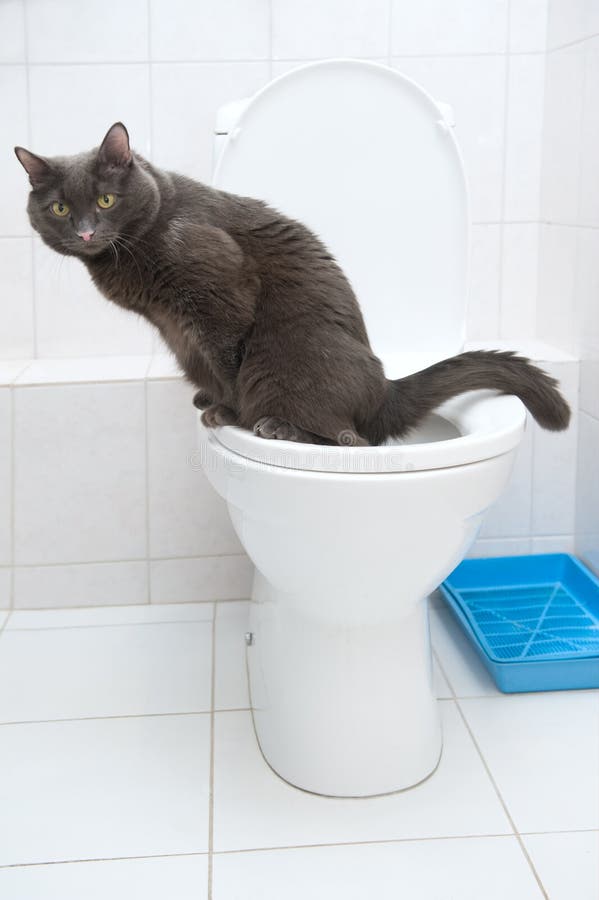Reasons You Should Never Flush Cat Poop Down Your Toilet - Important Facts
Reasons You Should Never Flush Cat Poop Down Your Toilet - Important Facts
Blog Article
We've uncovered this great article on Don’t flush cat feces down the toilet listed below on the net and accepted it made perfect sense to write about it with you in this article.

Intro
As pet cat owners, it's important to bear in mind exactly how we deal with our feline good friends' waste. While it may seem convenient to flush feline poop down the toilet, this technique can have destructive repercussions for both the setting and human health and wellness.
Ecological Impact
Flushing cat poop presents damaging pathogens and bloodsuckers into the water, positioning a considerable risk to water ecosystems. These impurities can negatively influence marine life and concession water quality.
Wellness Risks
Along with environmental problems, flushing feline waste can additionally position wellness risks to humans. Feline feces might include Toxoplasma gondii, a bloodsucker that can trigger toxoplasmosis-- a possibly severe health problem, specifically for pregnant ladies and individuals with weakened body immune systems.
Alternatives to Flushing
Luckily, there are safer and a lot more liable methods to deal with pet cat poop. Think about the adhering to choices:
1. Scoop and Dispose in Trash
One of the most typical approach of taking care of cat poop is to scoop it right into an eco-friendly bag and throw it in the garbage. Be sure to utilize a committed litter inside story and throw away the waste quickly.
2. Usage Biodegradable Litter
Choose eco-friendly cat trash made from products such as corn or wheat. These litters are eco-friendly and can be securely thrown away in the trash.
3. Bury in the Yard
If you have a yard, take into consideration burying feline waste in a designated area far from vegetable yards and water resources. Be sure to dig deep adequate to avoid contamination of groundwater.
4. Set Up a Pet Waste Disposal System
Invest in a family pet waste disposal system especially made for cat waste. These systems utilize enzymes to break down the waste, lowering smell and environmental impact.
Conclusion
Liable pet dog possession prolongs past providing food and shelter-- it also involves proper waste management. By refraining from flushing cat poop down the toilet and opting for different disposal techniques, we can minimize our ecological impact and safeguard human wellness.
Why Can’t I Flush Cat Poop?
It Spreads a Parasite
Cats are frequently infected with a parasite called toxoplasma gondii. The parasite causes an infection called toxoplasmosis. It is usually harmless to cats. The parasite only uses cat poop as a host for its eggs. Otherwise, the cat’s immune system usually keeps the infection at low enough levels to maintain its own health. But it does not stop the develop of eggs. These eggs are tiny and surprisingly tough. They may survive for a year before they begin to grow. But that’s the problem.
Our wastewater system is not designed to deal with toxoplasmosis eggs. Instead, most eggs will flush from your toilet into sewers and wastewater management plants. After the sewage is treated for many other harmful things in it, it is typically released into local rivers, lakes, or oceans. Here, the toxoplasmosis eggs can find new hosts, including starfish, crabs, otters, and many other wildlife. For many, this is a significant risk to their health. Toxoplasmosis can also end up infecting water sources that are important for agriculture, which means our deer, pigs, and sheep can get infected too.
Is There Risk to Humans?
There can be a risk to human life from flushing cat poop down the toilet. If you do so, the parasites from your cat’s poop can end up in shellfish, game animals, or livestock. If this meat is then served raw or undercooked, the people who eat it can get sick.
In fact, according to the CDC, 40 million people in the United States are infected with toxoplasma gondii. They get it from exposure to infected seafood, or from some kind of cat poop contamination, like drinking from a stream that is contaminated or touching anything that has come into contact with cat poop. That includes just cleaning a cat litter box.
Most people who get infected with these parasites will not develop any symptoms. However, for pregnant women or for those with compromised immune systems, the parasite can cause severe health problems.
How to Handle Cat Poop
The best way to handle cat poop is actually to clean the box more often. The eggs that the parasite sheds will not become active until one to five days after the cat poops. That means that if you clean daily, you’re much less likely to come into direct contact with infectious eggs.
That said, always dispose of cat poop in the garbage and not down the toilet. Wash your hands before and after you clean the litter box, and bring the bag of poop right outside to your garbage bins.
https://trenchlesssolutionsusa.com/why-cant-i-flush-cat-poop/

Do you really like reading up on Can You Flush Cat Poo or Litter Down the Toilet?? Leave a short review further down. We would be pleased to see your insights about this content. Hoping that you visit us again in the near future. Appreciated our write up? Please share it. Let others check it out. Many thanks for your time spent reading it.
Click Here Report this page